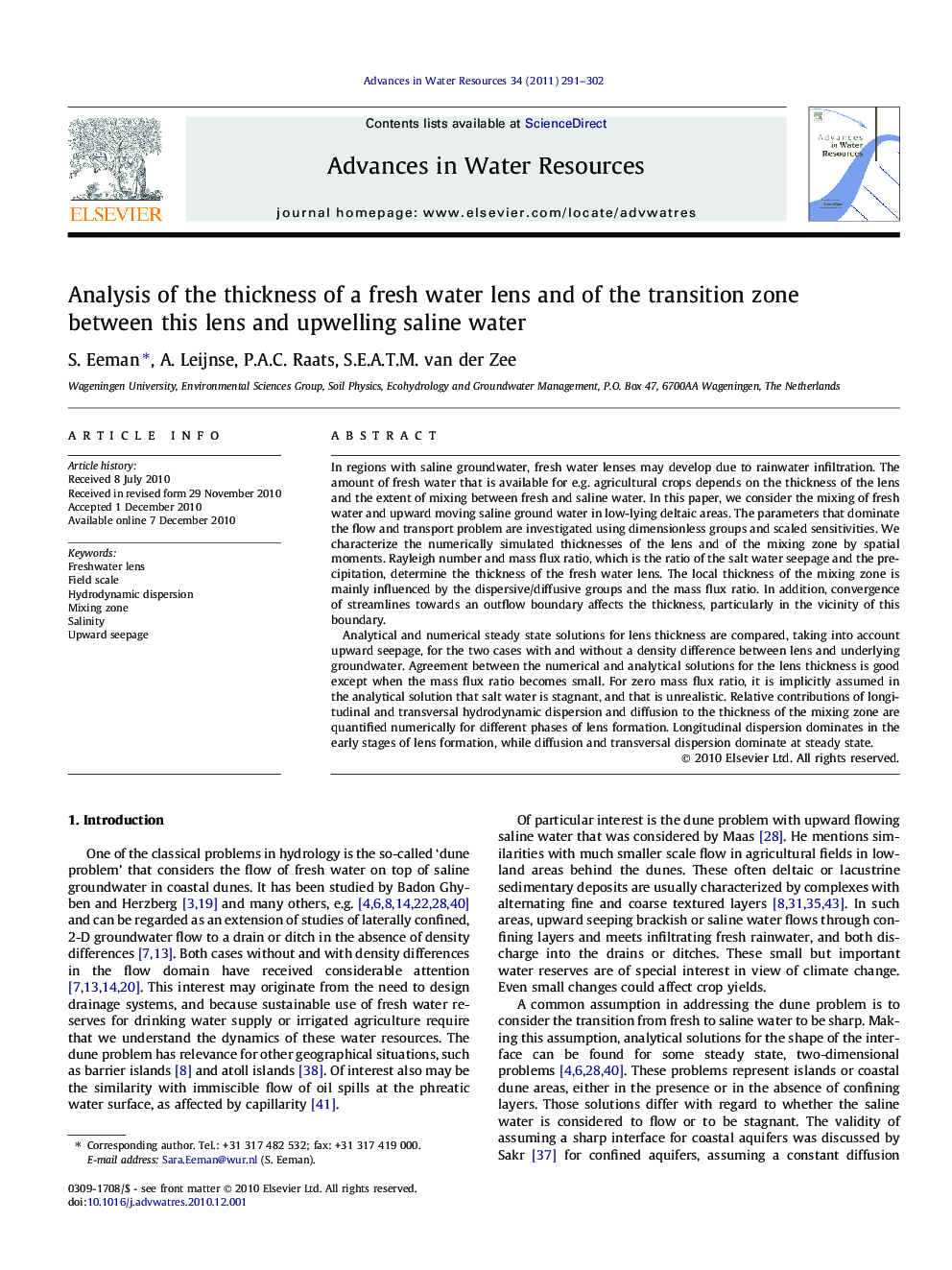| Article ID | Journal | Published Year | Pages | File Type |
|---|---|---|---|---|
| 4526291 | Advances in Water Resources | 2011 | 12 Pages |
In regions with saline groundwater, fresh water lenses may develop due to rainwater infiltration. The amount of fresh water that is available for e.g. agricultural crops depends on the thickness of the lens and the extent of mixing between fresh and saline water. In this paper, we consider the mixing of fresh water and upward moving saline ground water in low-lying deltaic areas. The parameters that dominate the flow and transport problem are investigated using dimensionless groups and scaled sensitivities. We characterize the numerically simulated thicknesses of the lens and of the mixing zone by spatial moments. Rayleigh number and mass flux ratio, which is the ratio of the salt water seepage and the precipitation, determine the thickness of the fresh water lens. The local thickness of the mixing zone is mainly influenced by the dispersive/diffusive groups and the mass flux ratio. In addition, convergence of streamlines towards an outflow boundary affects the thickness, particularly in the vicinity of this boundary.Analytical and numerical steady state solutions for lens thickness are compared, taking into account upward seepage, for the two cases with and without a density difference between lens and underlying groundwater. Agreement between the numerical and analytical solutions for the lens thickness is good except when the mass flux ratio becomes small. For zero mass flux ratio, it is implicitly assumed in the analytical solution that salt water is stagnant, and that is unrealistic. Relative contributions of longitudinal and transversal hydrodynamic dispersion and diffusion to the thickness of the mixing zone are quantified numerically for different phases of lens formation. Longitudinal dispersion dominates in the early stages of lens formation, while diffusion and transversal dispersion dominate at steady state.
Research highlights► Thicknesses of fresh water lenses and transition zones are modeled numerically. ► Approximate analytical solution for thickness of fresh water lens is quite adequate. ► Lens thickness depends mainly on Rayleigh number and mass flux ratio. ► Steady fresh–saline transition zone is dominated by transverse dispersion/diffusion. ► Transient fresh–saline transition zone may be dominated by longitudinal dispersion.
